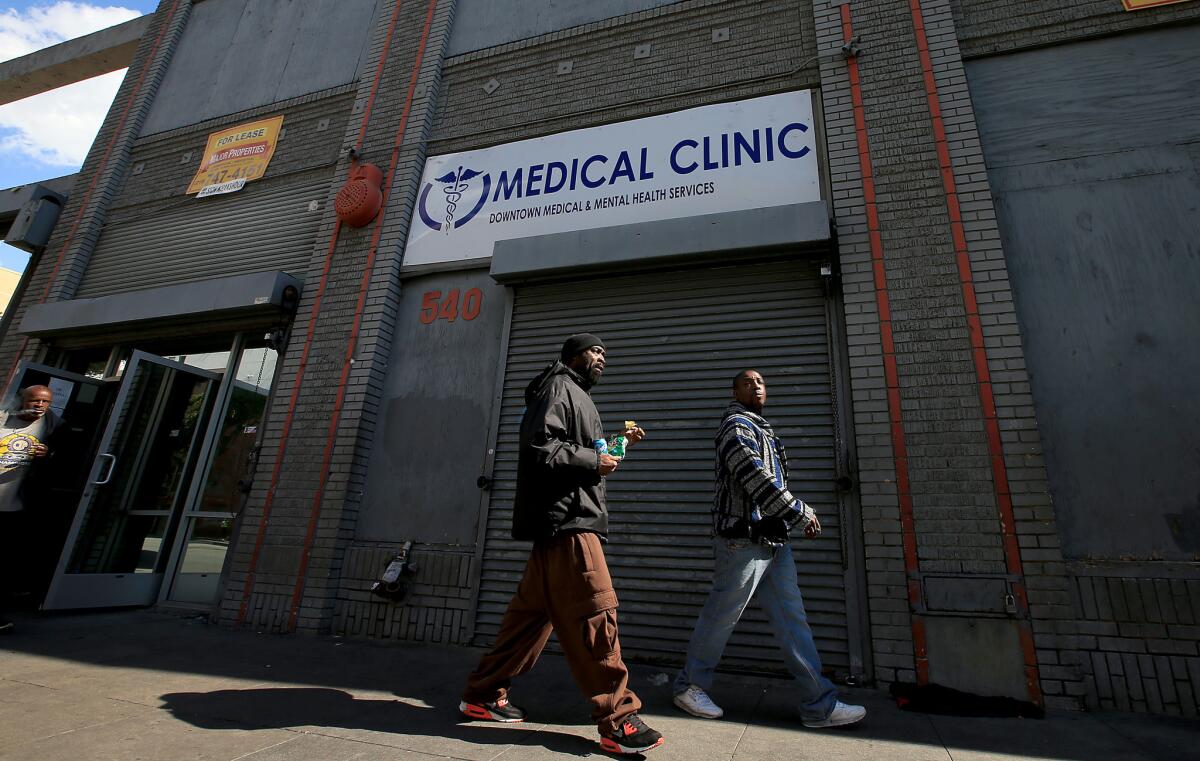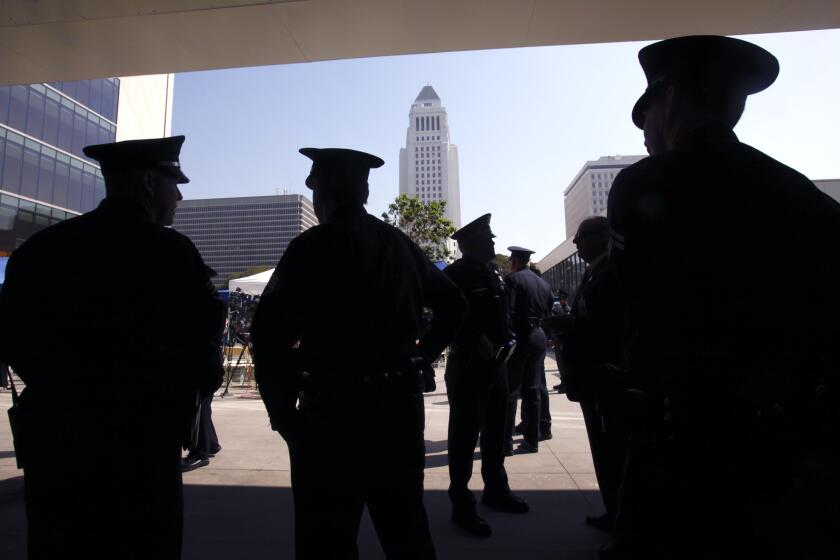Skid row patients die as clinic lacks OK to dispense methadone

In theory the forces of change are finally in sync: California has stopped putting drug addicts in prison, leaving them free to get help. And Obamacare has put help in reach by providing insurance that covers drug abuse treatment.
But in real life things aren’t nearly so neat: Voters passed Proposition 47 to lighten penalties for narcotics possession and spend the money saved on incarceration to help addicts get well. Many addicts are apparently not interested in treatment; they haven’t hit rock bottom. And those who are have discovered there aren’t enough options or slots.
Our intentions were good, but our actions haven’t quite caught up. In some neighborhoods, that can be a matter of life and death.
I’ve been making telephone rounds of drug treatment programs. Most had a few spots; many had waiting lists. And one had plenty of room for patients — but lacked the tools to treat their addiction.
I paid a visit, with a question on my mind: Why are heroin addicts on downtown’s skid row being deprived of care?
Because the wheels of bureaucracy don’t turn fast enough to meet the neighborhood need for methadone treatment.
“We have people in the area dying daily,” said Dr. Mike Yadagari, who sees 40 to 50 patients in a busy day at Downtown Medical and Mental Health Services, a comprehensive clinic in the heart of skid row — and by “heart” I mean it’s near what passes for luxury on a grimy stretch of San Pedro Street: a self-cleaning outdoor toilet and the Union Rescue Mission shelter.
::
Most of the patients Yadagari sees live in temporary shelters or on the streets. Many have multiple physical afflictions; most are mentally ill. Some have self-medicated for years and become addicted to narcotics. Crack cocaine, methamphetamine and heroin can all be bought, sold, smoked or injected a stone’s throw from the doctor’s office.
More than a year ago, the clinic applied for permission to treat heroin addicts with methadone, a synthetic opiate considered the most effective route to managing — and ultimately ending — heroin dependence. It’s not without its own risks, but doctors consider it an important tool. It blunts the cravings, blocks the high and eases withdrawal symptoms for heroin users trying to quit.
“It’s a slow, steady way to recover,” Yadagari said. “It makes them less drug-seeking; they’re not always chasing that next high. Once they stabilize … you control and lower the dose. Our goal is always to get them off the methadone.”
Methadone is part of California’s official regimen of narcotic replacement treatment. The medication is free under Medi-Cal insurance through Obamacare. That creates an incentive for addicts and an opportunity for the state to expand drug treatment.
Health officials in Los Angeles County predicted that more than 64,000 residents with substance use disorders might be eligible for treatment. Ramping up to meet that need certainly won’t be easy.
In July, L.A. County officials approved the skid row clinic’s plan to dispense the drug. But state officials have yet to schedule the visit the clinic needs for approval.
The delay frustrates Yadagari, whose clinic patients know him as “Dr. Mike.” “Every month we keep thinking, next month, next month.… It’s been 13 months,” he said.
Last spring, a man died of a heroin overdose just steps from the clinic’s front door. Last month, a young man died on the sidewalk outside with a needle still in his arm. At least 12 skid row residents have died of heroin overdoses in the last six months, he said.
The doctor keeps a list of patients he worries could be next. “This is not just someone wanting to get high, but wanting to feel better,” he said, impatience in his voice. “It’s a tragedy to lose someone when you have the ability to save them.
“People are dying while we’re waiting for a license to help them.”
::
At least those patients are no longer being locked up and left in cells to suffer through withdrawal. That’s the humane upside of Proposition 47.
But without realistic treatment options, that won’t count for much.
Even with top-notch treatment, recovery on skid row is bound to be dicey. That’s according to Andy Bales, who has spent 10 years running the Union Rescue Mission, across the street from Yadagari’s clinic.
“It’s nearly impossible for somebody to get off drugs when they’re hanging out in this environment,” Bales said.
The self-cleaning restroom has become a shooting gallery for heroin users. Crack cocaine is openly peddled a few feet from that. And bath salts — the nickname for the new meth — are sold at the tree outside his office.
Bales applauds the intent behind Prop. 47. But the recovery programs that addicts need “are going to be a long time coming, if they come at all,” he said. “We’ve been crying out for help for a long time here.”
What has he learned that we might benefit from now? “These are precious people on skid row — with some serious problems,” he said. “I’m not saying we should lessen our expectations, but we need to forgive ourselves if we fall short.
“Yes, we need drug treatment programs. But what we really need is to get these people off skid row.”
Twitter: @sandybanksLAT
More to Read
Sign up for Essential California
The most important California stories and recommendations in your inbox every morning.
You may occasionally receive promotional content from the Los Angeles Times.











